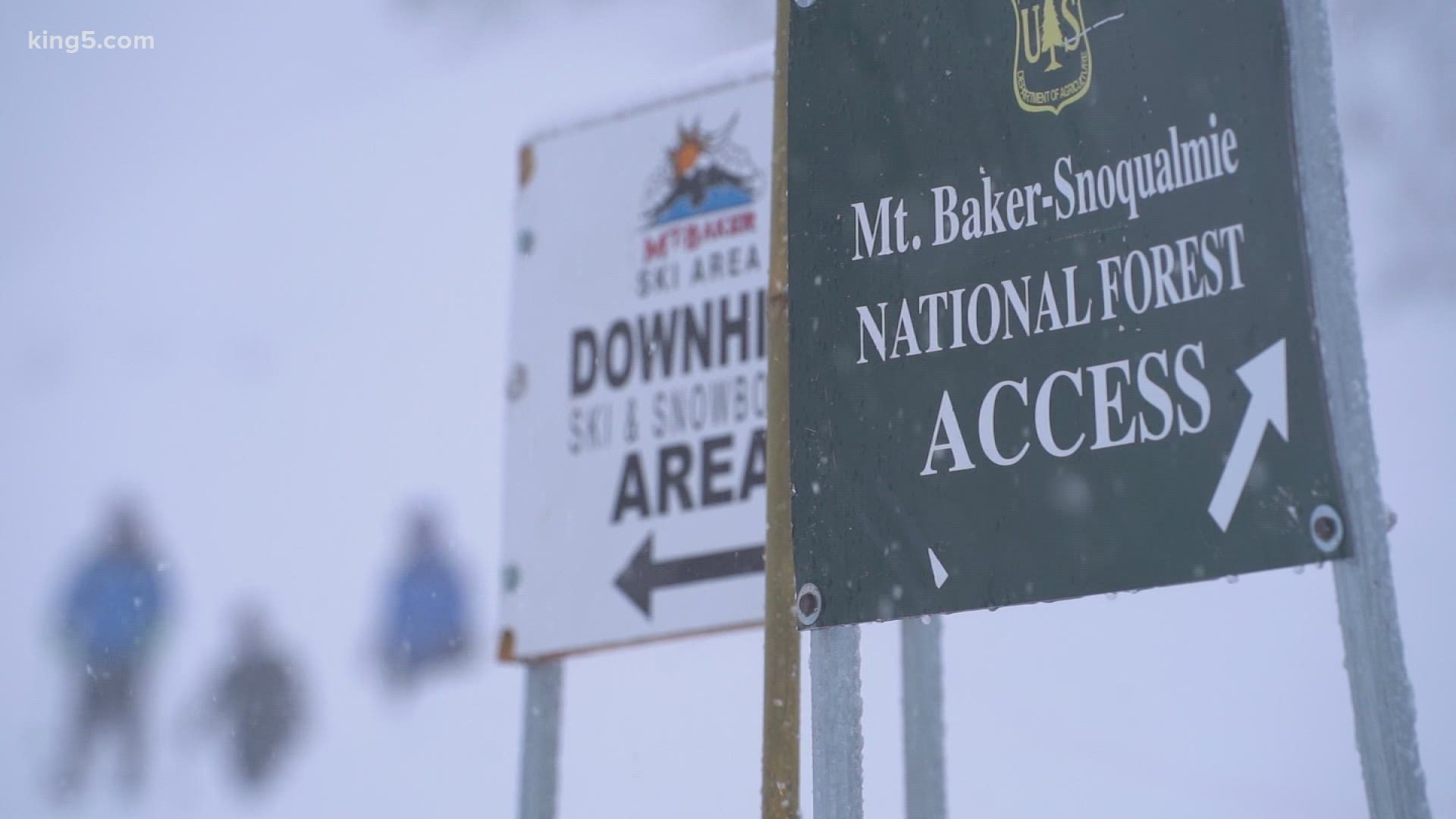WASHINGTON, USA — Summer sun brought with it challenges for local search and rescues teams as swarms of novice hikers who weren’t prepared well for the outdoors made for a record-breaking year.
Adding winter’s wrath to Washington’s landscapes has caused search and rescue volunteers to brace or long days ahead.
"I describe it as the three legs of the stool," said Jennifer Brenes, president of King County Search and Rescue, when describing what SAR crews are experiencing.
Leg one is the fatigue of rescuers, stretched thin with more rescues than ever before. Leg two is the La Niña year, where we’re expecting more cold and snow. Leg three is the limited capacity of ski resorts pushing recreators into backcountry terrain.
"We're very concerned," said Brenes. "Someone who may be a new recreationalist may be completely unaware they're entering avalanche territory, and we have a lot of it here in the Cascades."
What makes winter recreation dangerous is the addition of snow and cold. What isn't as obvious, according to Brenes, is that popular trails people flock to in the summer are right in the middle of avalanche territory come winter.
The Snow Lake Trail is a prime example. It's one of King County's most popular trails, but it crosses multiple avalanche chutes.
People snowshoeing have died there, including two teens just two winters ago.
"I am surprised, when we go out and do public education and awareness, how few people know what a beacon shovel and a probe are and if you don't know what they are, you really need to reconsider going into backcountry snow," said Brenes.
A beacon, probe, and shovel are tools that work together to help find your buried partner after an avalanche. There are avalanche classes in our area to teach you how to use them as well as how to recognize what avalanche territory looks like.
You should never go into avalanche terrain without those three tools, without knowing how to use them, and without at least one partner.
Experts say before you head anywhere this winter, do your research about what location you should explore.
"Unless you really have taken an avalanche awareness class, or you have a lot of experience navigating that, I encourage folks to find another spot that maybe you haven't been to yet, with a little bit less risk," said Anna Roth, the hiking content manager with the Washington Trails Association (WTA).
WTA has an online database not just for information on trails, but how to find places that fit your experience and information about what gear to bring and how to prepare for the outdoors. They're also preparing for more folks on trails this winter.
"We have lots of winter resources that we update every season," said Roth.
Even if you’re not planning on going into avalanche terrain, if you’re new to hiking, you’ll need to familiarize yourself with how to keep yourself safe
"It can get deadly in winter quite quickly, so don't delay. Call us right away, bring your 10 essentials and leave a trip plan with someone who can be accountable for you," said Brenes.
Along with bringing the ten essentials, things like water and food, extra clothes and a light source, Brenes said you should consider something called an electronic locator beacon or a personal locator beacon. Most of them cost anyway between $200 and $700, but Brenes said the investment is worth it.
"It's an insurance policy. It’s an 'oh crap' button. It tells us right where you're at," said Brenes.
There's a difference between an avalanche beacon and a personal locator beacon. The avalanche beacon only works with other transponders like it, which beeps when you get physically close. A personal locator beacon is a satellite messenger that, with the press of a button, you contact the local dispatch which then sends a team of rescuers to your exact location.
Brenes said it will save your life when needed.
"If you can't have cell coverage, some kind of messaging device like a beacon or Spot or inReach is really the only way," she said.
Any time you wander into the backcountry, especially in winter, preparation is key. Before you venture out there, do your research, make a plan, and enjoy our beautiful landscapes in the safest way possible.

